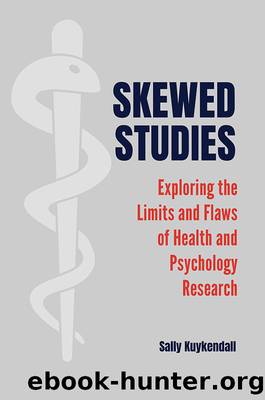Skewed Studies by Sally Kuykendall

Author:Sally Kuykendall
Language: eng
Format: epub
Publisher: ABC-CLIO
Published: 2020-03-15T00:00:00+00:00
Human Radiation Experiments
During World War I, large numbers of women went to work in factories filling positions vacated by men called to battle. The U.S. Radium Corporation (USRC) recruited workers to paint luminous dials on watches and military equipment. The job required small, steady hands and paid three times the average factory job. Many of the workers were young petite teenage girls recruited by friends and family members also working in the factory. At the end of the workday, the girls glowed in the dark from the iridescent paint. They became known locally as the ghost girls. The girls embraced the label. They painted their fingernails, face, and teeth with the radium. Some wore their best party dresses to work so that the dress glowed in the dark dance hall at night. USRC managers knew that radium was hazardous. The owners and company scientists avoided exposure. Factory chemists wore lead aprons, masks, and tongs to handle the radioactive material. The girls were not given any protective equipment or informed of the hazards of exposure. As part of the training, factory supervisors told the girls to use their lips to straighten the bristles of the paintbrush when it lost point. Thus, the workers were trained to put the radium directly into their mouths. By 1925, several of the workers died from necrosis of the jaw and bone tumors. USRC denied workersâ claims that the radium made them ill. The company went so far as to blame the women, suggesting that they died of syphilis. Local medical doctors were complicit in the cover up. After protracted legal battle, the Radium Girls settled for damages, medical, and legal expenses. The case is historically significant in the labor movement and workersâ right to know.
The publicity created by the Radium Girls ensured that scientists were extremely cautious in handling radioactive material. In 1944, a young chemist was working with plutonium at a secret government laboratory in Los Alamos, New Mexico, when the entire laboratory supply burst open splattering against the wall and into his mouth. He immediately went to the health directorâs office to have his stomach pumped. Little was known about the effects of plutonium ingestion and the lab assistant monitored his own excretions for plutonium. From this incident, the health director, Louis Hempelmann, expressed concerns regarding the need for studies in the detection of plutonium in bodily secretions. Over the next several months, further concerns were raised that Los Alamos laboratory workers may be overexposed to plutonium. Hempelmann, J. Robert Oppenheimer (the laboratory director), Colonel Robert Stone (the medical director of the Manhattan Project), and other government scientists agreed to conduct âhuman tracer experimentsâ to explore excretion. The experiments did not include the Los Alamos staff who were the actual subjects of interest. The experiments proposed injecting one to ten micrograms of plutonium into terminally ill hospital patients and collecting urine and feces to determine excretion rates. The doctor-researchers believed that plutonium had no short-term risks to human health and if the study
Download
This site does not store any files on its server. We only index and link to content provided by other sites. Please contact the content providers to delete copyright contents if any and email us, we'll remove relevant links or contents immediately.
Robotics in Neurosurgery by Unknown(99)
Statistics at Square Two by unknow(91)
Skewed Studies by Sally Kuykendall(71)
Guinea Pig Zero by Robert Helms(64)
Mechanistic Studies of Continuous Glucose Upgrading over Lewis Acidic Silicates by Operando UVâVis and HSQC NMR by Luca Botti Sebastian Meier & Ceri Hammond(57)
Guidelines for reporting of biocatalytic reactions by unknow(54)
Risk And Misfortune by Judith Green(53)
Terpenes by Simone Carradori(48)
Intraoperative Neuromonitoring by Marc R. Nuwer David B. MacDonald(45)
Rethinking evidence in medicine by Unknown(44)
The Temporal Lobe by Gabriele Miceli Paolo Bartolomeo Vincent Navarro(43)
Crosslinking of microsomal proteins identifies P-9000, a protein that is co-transported with phaseolin and phytohemagglutinin in bean cotyledons by Unknown(38)
Biomarkers of oxidative damage to predict ischaemia-reperfusion injury in an isolated organ perfusion model of the transplanted kidney by unknow(37)
Synthesis and investigation of singlet oxygen production efficiency of photosensitizers based on meso-phenyl-2,5-thienylene linked porphyrin oligomers and polymers by Rehan Khan Muazzam Idris Dönüs Tuncel(33)
Effect of Liquid Crystalline Systems Containing Antimicrobial Compounds on Infectious Skin Bacteria by Carla Souza & Evandro Watanabe & Carolina Patrícia Aires & Marilisa Guimarães Lara(23)
The Medicinal Uses of Cannabis and Cannabinoids by A review of cannabis & driving skills(15)
Green fluorescent protein-based assays for high-throughput functional characterization and ligand-binding studies of biotin protein ligase by Samuel P. Askin & Thomas E. H. Bond & Patrick M. Schaeffer(8)
Comparison of different characterization methods for nanoparticle dispersions before and after aerosolization by Heinz Fissan & Simon Ristig & Heinz Kaminski & Christof Asbach & Matthias Epple(7)
In situ analysis and real-time monitoring of the decomposition of the 2nd Grubbs catalyst in CH3CN by droplet spray ionization tandem mass spectrometry by Jie Jiang & Dandan Zhao & Hong Zhang & Jing He & Na Li(5)
